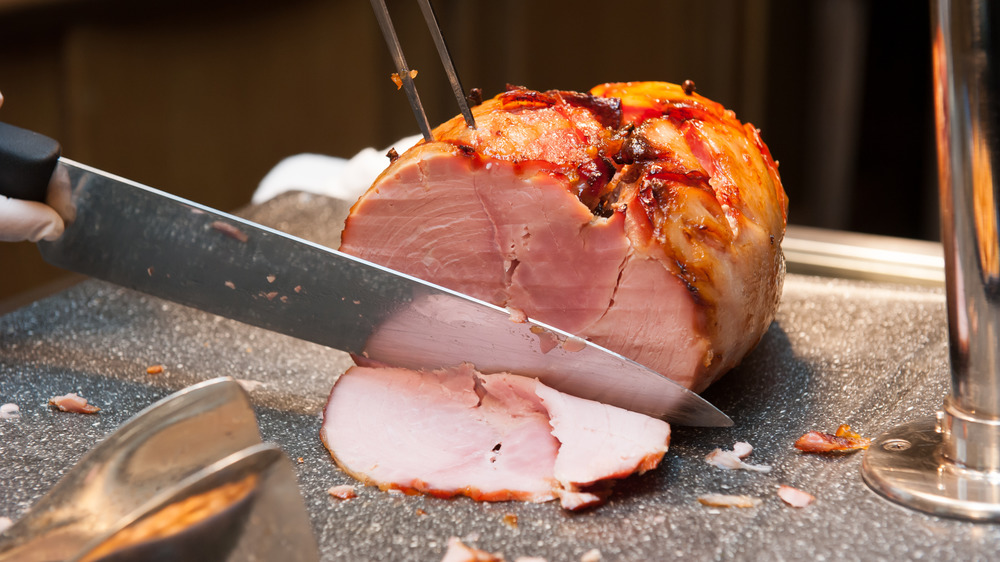Why You Should Think Twice About Buying Boneless Ham
If you're tempted to buy a boneless ham to make carving easier — take note. It's probably not the whole pork butt you'll be serving for dinner tonight (and nestling into your sandwiches tomorrow).
What exactly is ham? Simply put, ham is a specific cut of pork that comes from the back thigh and butt of a pig. The term has nothing to do with whether or not the meat is cured, uncured, brined, smoked, dry-aged, or boiled (via Kitchen Parade). The Kitchn explains that there are two types of cured "whole" hams: city and country, and it's the city ham (processed with brine and smoked or boiled) that you most likely encounter in your grocery store's refrigerated section. My Recipes adds that country hams are typically uncooked, preserved with a dry rub (like salt), and hung to dry (think Italian dry-aged prosciutto).
There's also canned ham, which are inexpensive cuts of pork that are cured, jammed into a can, and steam-cooked (via Delighted Cooking).
Head to the deli and you'll find boiled, baked, and smoked hams. Boiled hams are those that are shaped into a mold with the help of water, fat, and pork trimmings; while pricier baked and smoked hams are injected with salt, water, phosphates, and flavorings (via Cook's Illustrated). As you gaze through the glass deciding between the Virginia, maple, and Black Forest varieties, note that you're choosing the flavoring agent that was infused into the meat.
For the best flavor, opt for bone-in ham
A boneless ham (AKA boned ham) is a whole cured ham devoid of its hip, thigh, and shank bones (via Recipe Tips). Once the bones and most of the fat layer are removed, the meat is rolled, shaped back into "ham" form, and tightly sealed in plastic.
Boneless hams might be easier to carve, but for maximum flavor and moisture, Bon Appetit suggests buying a ham with some sort of bone in it — whether it's a full or partial one. Taste of Home adds that while a boneless ham may resemble the real deal, it's a processed product, so the texture is different. Eat This, Not That agrees and claims that boneless hams lack the flavor of their bone-in cousins.
And then there's the benefit of cooking a bone-in ham to the proper temperature. Using the center bone as a landing spot for your thermometer will ensure that you cook the meat to the proper internal temperature (via My Recipes).
Another added bonus of bone-in hams? The leftover bone can be used to add richness and depth to soups, stews, stocks, vegetables, beans, and even rice porridge (via The Kitchn).

